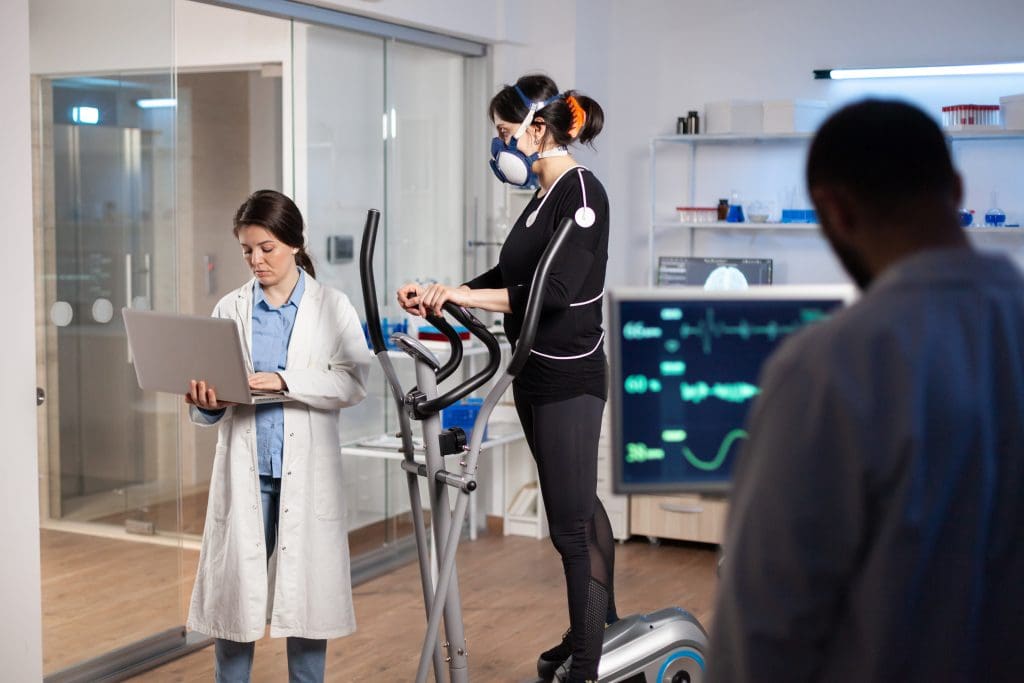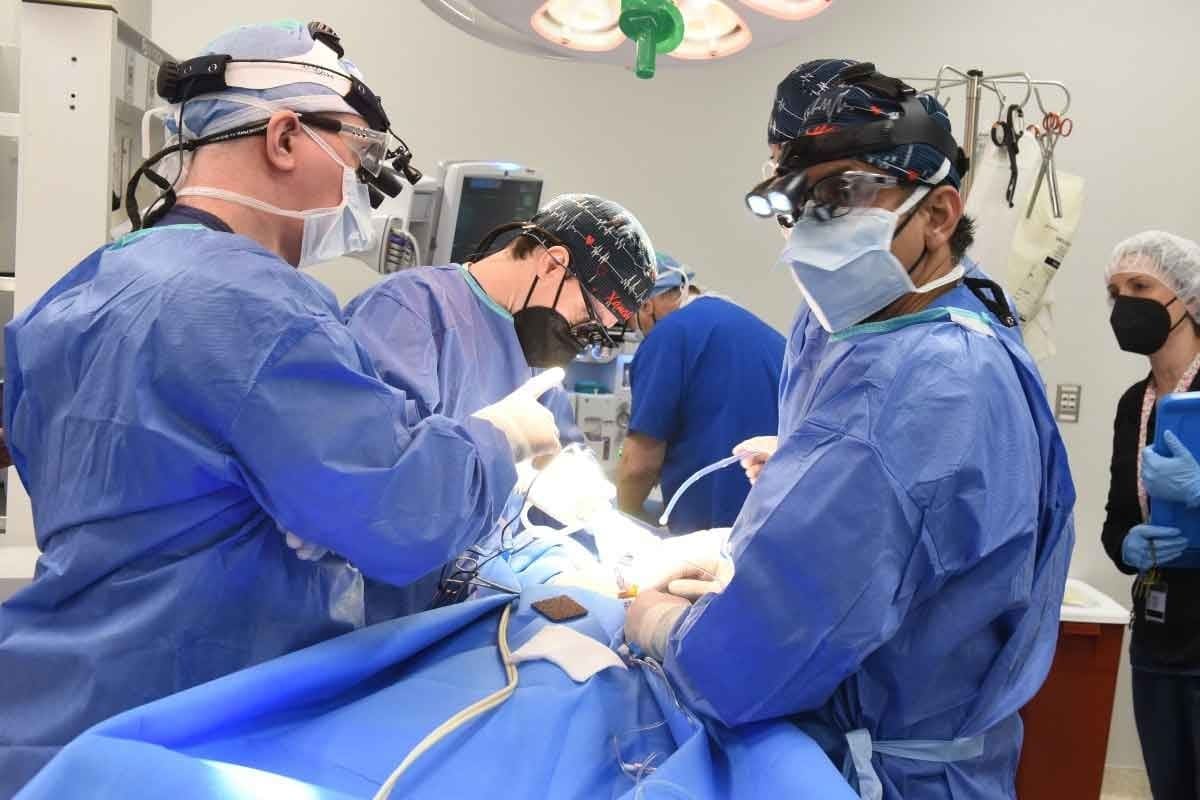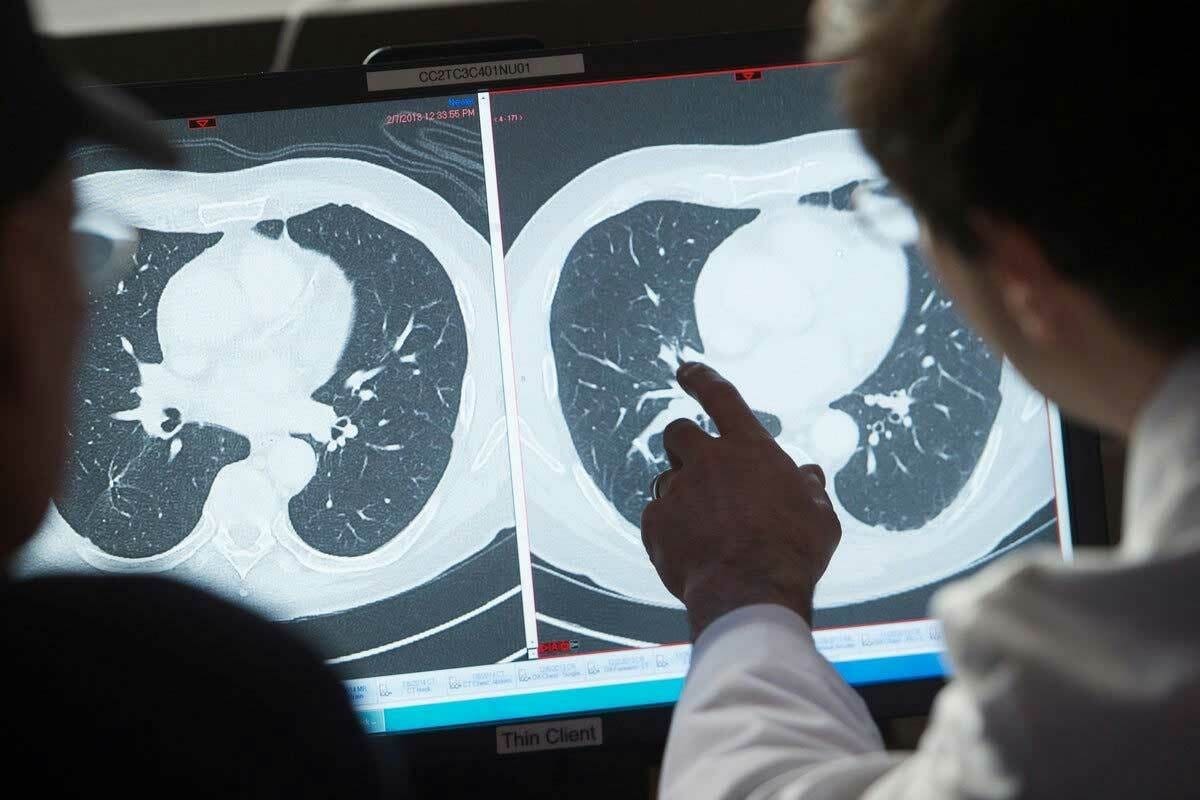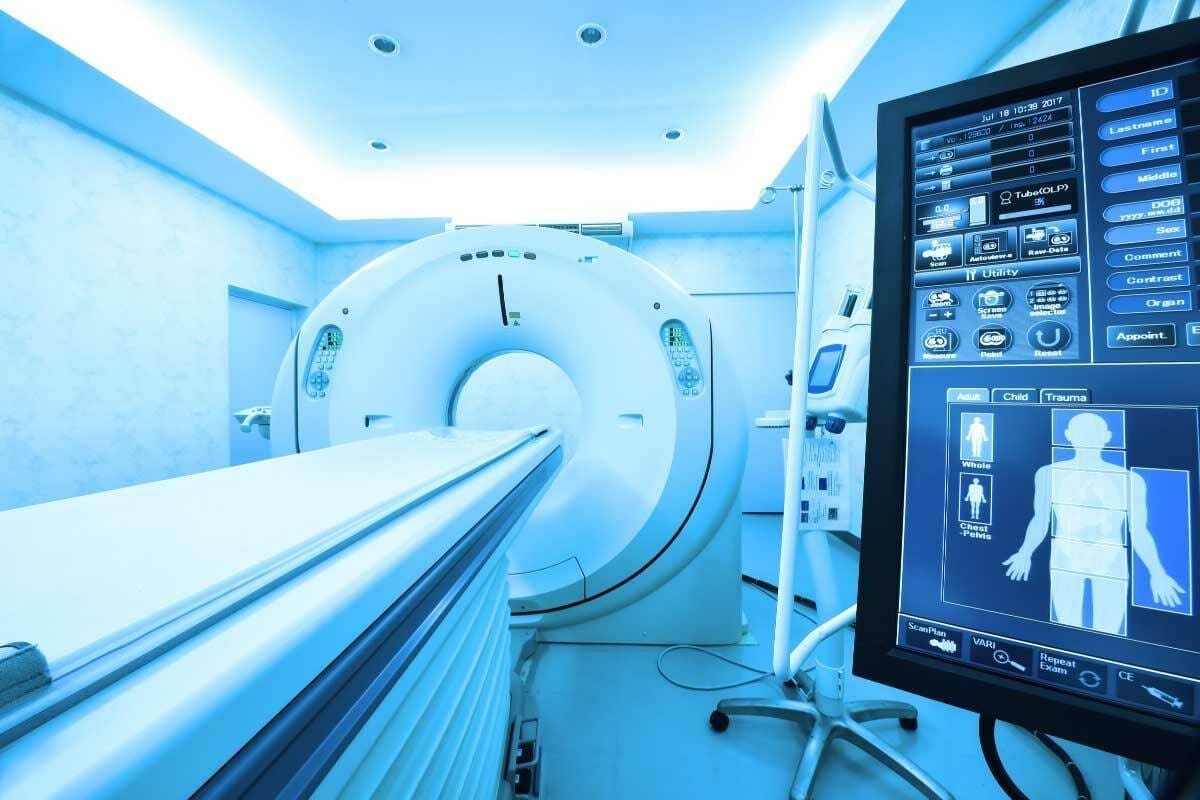Last Updated on November 27, 2025 by Bilal Hasdemir
Did you know millions of people worldwide get nuclear stress tests each year? This test is key for those with cardiac ultrasound abnormalities. It helps doctors spot heart problems early. Many patients ask, “Is a nuclear stress test a big deal? since the idea of radioactive tracers and imaging can sound overwhelming.
If you had an abnormal echocardiogram, a nuclear stress test can offer important insights. It shows how your heart works under stress. This helps doctors treat you quickly and right.
We at our institution are all about top-notch healthcare. We support international patients fully. Our team works hard to give you the best care, from start to finish.
Key Takeaways
- A nuclear stress test checks how your heart works under stress.
- It’s very important for those with echocardiogram findings showing heart issues.
- Our institution is all in on giving full care to international patients.
- The test helps doctors find cardiac ultrasound abnormalities and plan your treatment.
- We’re here to support you every step of your healthcare journey.
What is a Nuclear Stress Test?

A nuclear stress test is a high-tech way to check the heart. It helps doctors find and treat heart problems. It looks at how the heart works when it’s stressed, usually through exercise or medicine.
Definition and Basic Procedure
This test uses a tiny bit of radioactive material, called technetium-99m, in the blood. It lights up the heart, and a special camera captures the glow. The test is done twice: once when the heart is at rest and again after it’s stressed.
The images from both times are compared. This shows how well blood flows to the heart muscle.
The basic steps are:
- Preparation: Avoiding certain foods and medications before the test.
- Injection of the radioactive tracer.
- Imaging at rest.
- Stress induction through exercise or medication.
- Imaging after stress.
How it Differs from Regular Stress Tests
Nuclear stress tests give detailed pictures of the heart’s blood flow. They show if parts of the heart don’t get enough blood when stressed. This can mean heart disease or other heart problems.
The American Heart Association says nuclear stress tests are great when regular tests don’t give clear results. They provide more detailed heart function information.
“The nuclear stress test has become an invaluable tool in cardiology, providing insights that guide treatment decisions and improve patient outcomes.”
Cardiology Today
Here’s a table showing the main differences between nuclear stress tests and regular stress tests:
| Feature | Nuclear Stress Test | Regular Stress Test |
| Imaging | Provides detailed images of heart blood flow | Monitors heart rate, blood pressure, and ECG |
| Diagnostic Capability | Identifies areas of reduced blood flow | Assesses heart function under stress |
| Use of Radioactive Tracer | Yes | No |
Why Doctors Order Nuclear Stress Tests
Doctors order nuclear stress tests to get a better look at heart health. This test is key when other tests don’t give clear results. It helps us see how well the heart is working.
Common Cardiac Symptoms That Warrant Testing
Some symptoms make us think a nuclear stress test is a good idea. These symptoms include:
- Chest pain or discomfort (angina)
- Shortness of breath
- Dizziness or lightheadedness
- Palpitations or irregular heartbeats
When patients show these signs, we want to know if it’s heart disease. A nuclear stress test shows how well blood flows to the heart. It spots areas that might not get enough blood.
Risk Factors That May Necessitate the Test
Some risk factors also mean we might suggest a nuclear stress test. These include:
| Risk Factor | Description |
| Family History of Heart Disease | A history of heart disease in first-degree relatives (parents or siblings) |
| Diabetes | Diabetes mellitus, which increases the risk of cardiovascular disease |
| Hypertension | High blood pressure, a major risk factor for heart disease |
| High Cholesterol | Elevated levels of low-density lipoprotein (LDL) cholesterol |
| Smoking | Cigarette smoking, which significantly increases cardiovascular risk |
People with these risk factors might need a nuclear stress test, even if they don’t feel sick. It helps catch heart problems early.
Knowing why doctors order nuclear stress tests helps patients understand its value. It’s a key tool in managing heart health.
The Connection Between Nuclear Stress Tests and Abnormal Echocardiograms
Abnormal echocardiogram findings often point to heart problems. This leads to the need for more tests, like nuclear stress tests. We’ll look at how these tests work together to understand heart health better.
Understanding Abnormal Echocardiogram Results
An echocardiogram is a heart scan that shows the heart’s shape and how it works. If the results are off, it might mean problems like valve issues, heart failure, or cardiomyopathy. These signs suggest we need to dig deeper.
Abnormal echocardiogram results might show:
- Reduced left ventricular function
- Valvular regurgitation or stenosis
- Wall motion abnormalities
- Pericardial effusion
These findings are key to figuring out what to do next for the patient.
How Echocardiogram Findings Lead to Nuclear Testing
If an echocardiogram shows problems, a nuclear stress test might be suggested. This test checks how the heart works when stressed. It helps spot coronary artery disease, check if heart muscle is alive, and see how the heart handles stress.
Doctors decide on a nuclear stress test based on the echocardiogram’s results and the patient’s health. For example, if the echocardiogram shows big problems with heart muscle, a nuclear stress test can tell if it’s due to blocked arteries.
Knowing how echocardiogram results lead to nuclear stress tests helps patients understand their tests better. We aim to offer clear, caring guidance every step of the way.
Preparing for Your Nuclear Stress Test
Getting ready for a nuclear stress test is key to getting good results and feeling at ease. We know being prepared can help lessen any test-day jitters.
Dietary Restrictions Before the Test
Following your doctor’s dietary advice is very important. They might tell you to skip caffeine and some meds that could mess with the test. You might need to fast for a few hours, but this depends on your doctor’s orders.
Stick to the dietary rules to get the most accurate test results. If you’re unsure about what to eat or drink, ask your doctor for help.
Medication Adjustments
Tell your doctor about all your meds, including prescriptions and supplements. Some might need to be changed or stopped before the test. Your doctor will tell you how to handle your meds.
Share any worries about your meds with your doctor. They can offer advice tailored to your health and meds.
What to Wear and Bring
Wear comfy clothes and shoes for the test. You might need to change into a hospital gown, but loose clothes help. Bring your insurance cards, ID, and a list of your meds.
Being ready with the right clothes and documents makes the test day easier. If you’re unsure, your doctor’s office can help.
Step-by-Step: What Happens During a Nuclear Stress Test
To understand a nuclear stress test, let’s break it down. We’ll guide you through each step. This will help you know what to expect during this test.
The Injection Process
The first step is injecting a small amount of radioactive material, like technetium-99m, into your blood. This tracer helps us see how your heart works and blood flows. A small needle is used to inject it into a vein in your arm.
The injection is quick and might feel a bit like getting blood drawn. After it’s in, the tracer moves through your body. It gives us a baseline of your heart’s function.
The Exercise Component
Next, you’ll do some exercise, like walking on a treadmill or biking. We want to stress your heart to see how it works under effort. The exercise gets harder until you reach your target heart rate, based on your age and fitness.
We watch your heart rate, blood pressure, and ECG during this time. This ensures your safety and gives us important data. The exercise part usually lasts 7 to 12 minutes, based on your fitness and how fast you reach your target heart rate.
The Imaging Process
After exercising, you’ll go to an imaging room. There, a gamma camera will take pictures of your heart. This camera picks up the radiation from the tracer we injected, showing us your heart’s details.
We take pictures right after exercise and again after a short break. This lets us compare your heart’s function under stress and at rest. It gives us key insights into any heart issues.
Knowing the steps of a nuclear stress test helps you prepare. It makes you feel more at ease during the test.
Radiation Exposure: Should You Be Concerned?
Patients often worry about radiation when they think about nuclear stress tests. We get it and want to clear up any confusion.
Understanding the Amount of Radiation
A nuclear stress test uses a tiny bit of radioactive material. This material, often technetium, is injected into your blood to see how your heart works under stress. The test’s radiation dose is about 9-10 millisieverts (mSv).
For comparison, you naturally get about 3 mSv of radiation each year from the environment. So, the test’s radiation is like a few years of natural background radiation.
Comparing to Other Common Radiation Exposures
It’s good to look at how much radiation you get from a nuclear stress test compared to other things. For example:
| Procedure | Effective Dose (mSv) |
| Nuclear Stress Test | 9-10 |
| Chest CT Scan | 7-8 |
| Abdominal CT Scan | 10-20 |
| Flight from New York to Los Angeles | 0.035 |
The table shows that while the test’s radiation isn’t zero, it’s similar to or less than many other medical scans.
We believe the benefits of a nuclear stress test in finding and treating heart disease are worth the small risk of radiation. Our team works hard to keep radiation low while getting the needed info.
Potential Risks and Side Effects
It’s important for patients to know about the risks and side effects of nuclear stress tests. We aim to keep our care safe and effective. But, it’s key to understand the possible complications that can happen.
Common Minor Side Effects
Most people have little to no side effects from nuclear stress tests. But, some might feel:
- Mild discomfort or pain at the injection site
- Dizziness or lightheadedness during or after the test
- Nausea or headache, though these are rare
These side effects usually go away quickly and don’t need extra medical help.
Rare but Serious Complications
Even though they’re rare, serious problems can happen during or after a nuclear stress test. These include:
- Severe allergic reactions to the radioactive tracer
- Cardiac events such as heart attack or arrhythmias
- Significant changes in blood pressure
We do everything we can to avoid these risks. We watch patients closely during the test.
Who Should Avoid Nuclear Stress Tests
Some people should not have a nuclear stress test because of the risks. These include:
- Pregnant or breastfeeding women, due to radiation exposure
- Patients with severe asthma or certain other medical conditions that may be exacerbated by the test
- Individuals who are unable to exercise or have certain medications that interfere with the test’s effectiveness
We look at each patient’s health history and current condition. This helps us choose the best test for them.
Interpreting Nuclear Stress Test Results
After a nuclear stress test, patients often wonder about their results. It’s key to understand these results for cardiac care. We’ll explain what to expect from your test results.
What Normal Results Look Like
Normal results mean your heart works well under stress. The test didn’t find big blockages or blood flow issues. A normal result is reassuring and suggests a healthy heart. But, always talk to your doctor about your results. They can give more insight based on your health and history.
Understanding Abnormal Findings
Abnormal findings can point to heart conditions like coronary artery disease. These might show areas where the heart muscle doesn’t get enough blood flow during stress. Doctors use these findings to decide what to do next. Remember, abnormal results don’t always mean a severe condition. They might just need more testing or watching.
The Timeframe for Receiving Results
When you’ll get your results can vary. Usually, it’s within 24 to 48 hours. But, it depends on the facility and their procedures. Your doctor will explain your results and what to do next.
In conclusion, knowing your nuclear stress test results is vital for heart health. Whether they’re normal or not, talking to your doctor is key. They can help you make the best choices for your heart care.
Accuracy and Limitations of Nuclear Stress Tests
Nuclear stress tests are a valuable tool for diagnosing heart issues. But, their accuracy can be affected by several factors. It’s important to know both their strengths and limitations.
Sensitivity and Specificity Rates
The accuracy of nuclear stress tests is measured by sensitivity and specificity. Sensitivity is the test’s ability to find heart disease correctly. Specificity is its ability to find no heart disease correctly. These tests are usually very accurate, thanks to their high sensitivity and specificity rates.
A study looked at the accuracy of these tests. It found an average sensitivity of 85% and specificity of 90%. But, these numbers can change based on the test population and protocols.
| Test Characteristic | Average Value | Range |
| Sensitivity | 85% | 80-90% |
| Specificity | 90% | 85-95% |
Factors That Can Affect Test Accuracy
While these tests are reliable, several factors can affect their accuracy. These include:
- Patient factors such as body habitus and certain medical conditions
- The technical aspects of the test, including equipment and personnel expertise
- How the test results are interpreted, which can vary
A cardiologist, says, “The accuracy of nuclear stress tests depends on technology and professional skill.”
“The interpretation of nuclear stress tests requires a deep understanding of cardiac physiology and pathology. It’s not just about reading images; it’s about correlating findings with clinical presentation.”
To improve accuracy, it’s key to follow proper protocols and consider each patient’s unique factors when interpreting results.
Nuclear Stress Tests vs. Other Cardiac Diagnostic Procedures
The world of heart tests is wide, with many options like nuclear stress tests and more invasive methods. It’s key for patients and doctors to know the differences to make the best choices.
Comparison with Regular Stress Tests
Nuclear stress tests and regular stress tests are similar but different. Both check how the heart works under stress. But, nuclear stress tests give clearer images of the heart’s blood flow.
Regular stress tests watch heart rate, blood pressure, and ECG while you exercise. On the other hand, nuclear stress testsuse a tiny bit of radioactive material to see the heart’s blood flow.
Comparison with Cardiac Catheterization
Cardiac catheterization is more invasive than nuclear stress tests. It involves putting a catheter into an artery or vein in the leg or arm and guiding it to the heart.
Cardiac catheterization lets doctors see the coronary arteries up close. It can also help with procedures like angioplasty. Though it’s more invasive, it’s used when other tests show big blockages in the arteries.
Comparison with Cardiac MRI
Cardiac MRI (Magnetic Resonance Imaging) gives detailed heart images without ionizing radiation. It checks the heart’s structure and function, like scar tissue or other issues.
Cardiac MRI doesn’t use radiation, making it safer for some. But, it’s not for everyone, like those with metal implants or who get anxious in small spaces.
Looking at these tests, we see each has its own good points and downsides. The right test depends on the patient’s health, medical history, and what’s needed for diagnosis and treatment.
Cost and Insurance Coverage for Nuclear Stress Tests
Understanding the cost and insurance for a nuclear stress test is key. This test’s price can be a big worry for many.
Average Costs in the United States
The price of a nuclear stress test varies a lot. It depends on where you are, who does the test, and where it’s done. On average, it costs between $1,000 and $3,000 in the U.S. But, prices can change based on your situation.
Remember, the total cost might include extra fees. These can be for the doctor, the place where you get tested, and any tests you need later. It’s smart to talk to your doctor about what you’ll really pay.
Insurance Coverage Considerations
Most insurance plans cover nuclear stress tests if they’re needed. But, how much they cover can differ a lot. It depends on your insurance and policy.
To make sure you’re covered well, we suggest:
- Ask your insurance about what they cover.
- Find out if you’ll have to pay extra, like deductibles or copays.
- Check if the place and doctors are in your network.
Knowing about your insurance can help lower your stress. It makes sure you get the care you need without surprise costs.
Recovery After Your Nuclear Stress Test
Knowing what to expect after a nuclear stress test can ease your worries. We’ll walk you through the immediate steps and when you can get back to your daily life.
Immediate Post-Test Period
Right after the test, you’ll be watched closely for any bad reactions. We’ll check your vital signs and look for any discomfort or issues. Usually, patients can go home soon after the test.
Key Points to Remember:
- Drink lots of water to get rid of the radioactive tracer.
- Stay away from pregnant women and young kids for the day as a safety step.
- Take your medicines as your doctor tells you to.
When to Resume Normal Activities
Most people can go back to their usual activities right after the test. But, always listen to your doctor’s specific advice based on your health.
| Activity | Guideline |
| Driving | Usually okay right after the test, unless you feel dizzy or uncomfortable. |
| Exercise | Go back to your usual workout unless your doctor says not to. |
| Work | You can usually go back to work the same day, depending on your job and how you feel. |
One patient said, “The recovery was easier than I thought. I was back to normal in hours.” This is a common feeling, but always listen to your doctor’s advice.
By following these tips and your doctor’s advice, you can have a safe and easy recovery after your nuclear stress test.
What Happens If Your Nuclear Stress Test Shows Problems?
If your nuclear stress test shows issues, your healthcare team will help you. They will guide you through more tests and treatment options. This is key to figuring out and managing heart problems.
Common Follow-Up Procedures
If your test results are not good, your doctor might suggest more tests. These can include:
- Coronary Angiography: A procedure that uses dye and special X-rays to show the inside of your coronary arteries.
- Cardiac MRI: A test that uses magnetic fields and radio waves to create detailed images of your heart.
- Stress Echocardiogram: An ultrasound test that images your heart while it’s under stress, usually from exercise.
These tests help your doctor understand the extent and nature of any heart disease. They guide the development of an appropriate treatment plan.
Treatment Paths Based on Results
Treatment after an abnormal nuclear stress test can vary a lot. It depends on the specific findings. Common treatment paths include:
- Lifestyle Changes: Your doctor may recommend dietary changes, increased physical activity, and smoking cessation to improve heart health.
- Medication: You might be prescribed medications to manage symptoms, reduce risk factors, or treat underlying conditions.
- Revascularization Procedures: In some cases, procedures like angioplasty or coronary artery bypass grafting (CABG) may be necessary to restore blood flow to the heart.
It’s important to follow your doctor’s recommendations. Also, attend any scheduled follow-up appointments. This helps monitor your condition and adjust your treatment plan as needed.
Technological Advances in Nuclear Cardiac Imaging
Technology is changing nuclear cardiac imaging a lot. We’re always learning about new tools and methods to help our patients. These changes make our work more accurate and safer for everyone.
Recent Improvements in Equipment and Techniques
New tech in nuclear cardiac imaging is exciting. Modern gamma cameras can see more clearly and scan faster. High-sensitivity collimators and new algorithms make pictures better, helping us diagnose better.
Also, hybrid imaging techniques like SPECT/CT and PET/CT give us a full view of the heart. They mix function and anatomy for a complete picture.
Cadmium-zinc-telluride (CZT) detectors are a big step up. They’re more sensitive and clear than old detectors. This means we can spot heart problems sooner.
Future Directions in Cardiac Testing
Looking to the future, we expect even more changes. Artificial intelligence (AI) and machine learning will help us analyze images better. This could make our diagnoses more accurate and treatments more tailored.
New research on radiopharmaceuticals might bring us better diagnostic tools. We’re also moving towards imaging that’s better for patients. This means less radiation and more comfort during scans.
By using these new technologies, we’re not just getting better at our jobs. We’re also helping the whole field of heart care. Our goal is to keep up with the latest tech to give our patients the best care possible.
Conclusion: Is a Nuclear Stress Test Really a Big Deal?
As we wrap up our talk on nuclear stress tests, it’s clear they’re key for checking heart health. They’re most important for people with odd echocardiogram results or findings.
A nuclear stress test does involve radiation, but the benefits usually outweigh the risks. This is true when doctors use it wisely. We’ve looked at the test, how to get ready, and the possible dangers. This gives a full picture of what to expect.
For patients from other countries looking for top medical care, a nuclear stress test is a big choice. At our place, we’re all about giving the best healthcare. We make sure every part of the test is done with care and skill.
In short, a nuclear stress test is a key tool in heart care, even with some risks. By knowing its role and what it means, patients can make smart choices about their health. And we can keep giving top-notch care.
FAQ
What is a nuclear stress test?
A nuclear stress test is a test that uses a tiny bit of radioactive material. It creates images of the heart. Doctors use these images to check how well the heart works and how blood flows, even when stressed.
How does a nuclear stress test differ from a regular stress test?
A nuclear stress test is different because it uses a radioactive tracer. This tracer is injected into your blood. It helps doctors see how the heart’s blood flows and works, giving more detailed info about the heart’s health.
Why do doctors order nuclear stress tests?
Doctors order these tests to find and check coronary artery disease. They also use them to see how the heart works after a heart attack. Plus, they help figure out if treatments for heart problems are working.
What are the common cardiac symptoms that warrant a nuclear stress test?
Symptoms like chest pain, shortness of breath, dizziness, and palpitations might need a nuclear stress test. These symptoms are more concerning if they happen when you’re active or stressed.
How do I prepare for a nuclear stress test?
To get ready, avoid eating or drinking things like caffeine before the test. Wear comfy clothes and shoes that are good for exercise.
What happens during a nuclear stress test?
First, a tiny amount of radioactive tracer is put into your blood. Then, you’ll walk on a treadmill or ride a bike to stress your heart. After that, imaging shows how your heart is working.
Is radiation exposure a concern during a nuclear stress test?
Yes, there is some radiation in a nuclear stress test. But the benefits of the test are usually more important than the risks. The amount of radiation is considered safe.
What are the possible risks and side effects of a nuclear stress test?
You might feel a little dizzy or have a headache from the tracer. But serious problems like heart attacks or severe allergic reactions are rare.
How are nuclear stress test results interpreted?
A cardiologist or radiologist looks at the images from the test. They check for any heart function or blood flow problems. Then, they give a report to your doctor.
How long does it take to receive nuclear stress test results?
You’ll usually get your results a few hours to a few days after the test. It depends on how fast the lab can process the images.
What happens if my nuclear stress test shows problems?
If the test shows issues, your doctor will talk to you about it. They might suggest more tests or treatments, like medication or procedures like angioplasty.
How do nuclear stress tests compare to other cardiac diagnostic procedures?
Nuclear stress tests are one of many tests for the heart. They give detailed info about the heart’s function and blood flow. But, they might not be right for everyone. Other tests, like cardiac catheterization or MRI, might be better in some cases.
What are the future directions in nuclear cardiac imaging?
Future advancements in technology could make nuclear stress tests even better. New tracers and camera systems might improve accuracy and safety. They could also help diagnose and manage heart disease better.
Are there any dietary restrictions after a nuclear stress test?
Usually, there are no special diet rules after the test. But, it’s important to eat healthy to keep your heart strong.
When can I resume normal activities after a nuclear stress test?
You can usually go back to normal activities right after the test. But, always follow your doctor’s advice about any special precautions.






